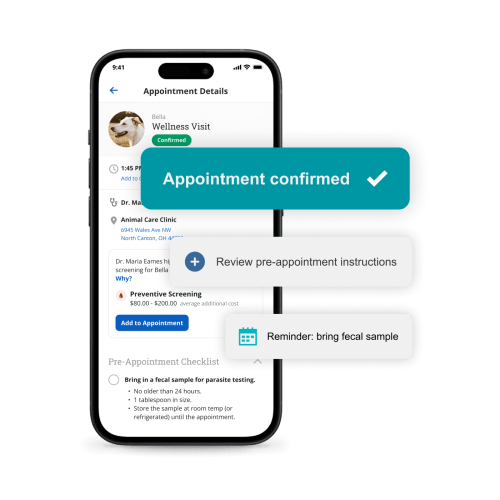The End of the Road: How to Fire a Client

Despite your best efforts to warn difficult clients that they must follow your policies and stick to your boundaries, some may refuse to reform. If your practice managers or owners will not take action, these clients can negatively impact your practice’s reputation, daily workflow, team morale, and bottom line.
When you’ve exhausted every option and realize compromise is not possible, it’s time to play your last card. It’s time for your troublesome client to find a new, more suitable veterinary home.
It’s time to learn the not-so-subtle art of how to fire a client.
Gather the evidence
Ideally, by the time you reach this decision, you’ve documented each negative client interaction, including reprimands and every attempt you and your team have made toward resolution, in the patient’s electronic medical record. Then, you can easily review the client’s behavioral history, identify trends and patterns, and build a case for terminating the veterinarian-client-patient relationship (VCPR). Although you may not need to justify firing an abusive or overtly disrespectful client with a full review, this can help in cases where the decision to terminate the VCPR is less clear. Organizing evidence of the client’s offenses—including dates, times, and appropriate witness statements—can also help you stay calm, focused, and professional when delivering the news to the client.
Communicate your decision
Your method for giving a client their walking papers will vary based on the circumstances leading up to their termination. Meeting in person with a previously hostile client may not be practical or safe, but such a meeting is a professional courtesy for clients you are terminating for non-behavior reasons (e.g., failing to abide by practice policies). If you’re not certain that the meeting will go smoothly, consider including another team member as an observer.
If you do not want a face-to-face encounter, consider a phone call or a written notice informing your client that your practice can no longer care for their pet.
No matter how you choose to deliver the news, always follow up with a formal letter that states plainly that you have terminated the VCPR. Include a hard copy of the pet’s complete medical record, or email them the link to the record.
Stay professional and focus on the facts
If you decide to fire your client in person or over the phone, be straightforward, honest, and professional. Keep in mind that the communication is not a dialogue but a directive—you do not need to engage with the client. This will help you avoid the client’s defensive yelling and accusations, or worse, accepting a plea to remain under your practice’s care.
Explain to the client in plain terms why you are firing them. Gather situations from their pet’s medical record and stay on message with these key points. Keep each example brief and factual to avoid rehashing old events, inviting client rebuttal, or triggering old anger or frustration. Avoid becoming emotional or reactive.
Put it in writing
Whether you choose to communicate solely with the formal client termination letter, or use the letter as a guide during a follow-up meeting or call, your letter should clearly state the objective (i.e., termination of services at ABC Animal Hospital) and the reasons behind the decision. If you’ve already spoken to the client, this letter should reiterate every point in the conversation. Use plain language to minimize confusion, and avoid apologetic or regretful sentiments that the client could misconstrue as your acceptance of blame. Always conclude the letter with well-wishes for the pet to reinforce that your practice values compassion, professionalism, and integrity.
Create a smooth exit for your client
While you may be tempted to give your client the old heave-ho, legally ending the VCPR involves more than showing your former client the door. Fortunately, this final action can also seem like a gesture of goodwill and professionalism, so it’s a win-win for your practice and its reputation.
Provide your client not only with print or electronic copies of their pet’s entire medical record, but also any supplemental documents or media (e.g., diagnostic image links) the client may require. Make their transition to another practice as effortless as possible.
If the pet is currently receiving ongoing care for a medical condition, the primary veterinarian is required to transfer patient care to another veterinarian. This does not need to be a roadblock—you can handle the issue professionally by simply asking the client where they’d like their pet’s records forwarded.
These actions not only minimize future encounters with a disgruntled client, but also show compassion and concern for the pet’s wellbeing. This ends your VCPR on a positive note and may minimize client backlash, such as negative reviews or word-of-mouth comments.
Firing a client is never easy or simple, but it can sometimes be the only positive option for your practice. If a difficult client is interfering with your clinic’s ability to provide high-quality care or a safe and productive work environment, don’t delay your decision. Arm yourself with information, present the facts, inform your client, and free your practice and your team—and yourself.




